One of Norway's most famous landmarks is a terrific example of wooden architecture. Here's what you need to know about Borgund stave church.
Norway's awesome stave churches are a truly iconic feature of the rural landscape. Arguably the most authentic of them all lies between Flåm and Jotunheimen National Park at the very heart of the country.
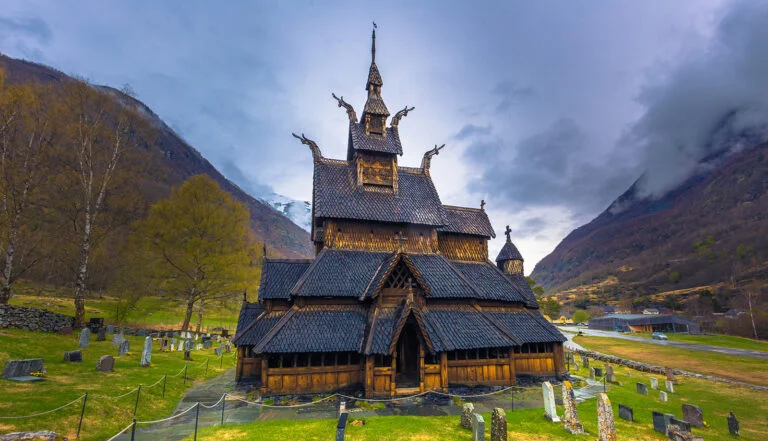
Borgund is Norway's most visited stave church. If it looks familiar, that could be because it's been copied! Several replicas exist around the world, in Germany and the USA.
Adjacent you'll find a modern visitor centre with exhibits on the stave church’s influence on everyday medieval life in Norway, along with other stave churches and Viking artefacts. Several interesting walks also start near the church.
How to get there
Getting to Borgund generally requires a car but a stop here can easily be incorporated into a road trip between Oslo and Bergen, as the church lies just off Norway's E16 highway.
On the approach to the location, you'll need to follow the signs to pull of the E16 on to the old road, where you'll find a parking area and visitor centre. More on this road later!
Although I do recommend a car, during high season there is usually a public bus service from Sogndal, Lærdal and Flåm that stops on the E16, from where it's around a 15-minute walk to the church. You can search routes and times with Kringom.
The bus only runs once per day and gives you around two hours before the return trip. It's best to check with Kringom and/or the local tourist office if you're planning a visit, as these timetables can change with very little notice and I don't want to be responsible for sending you on the wrong bus route!
The architecture of the stave church
Borgund is built on a basilica plan, with reduced side aisles, and an added chancel and apse. The medieval belfry close by is the only one of its kind left in Norway.
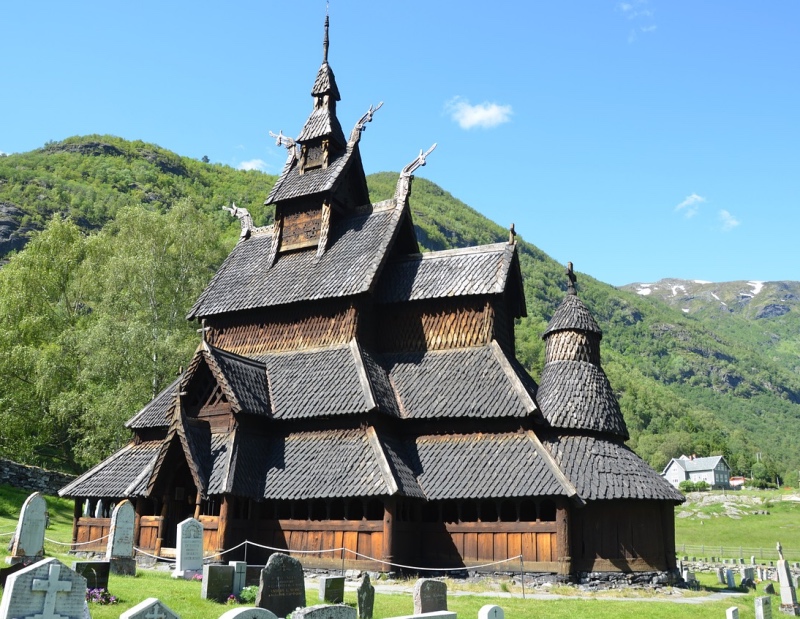
The eye-catching exterior architecture is known throughout the world. It has tiered, overhanging roofs, topped with a tower. The steep roof is boarded horizontally and clad with shingles, although originally it would have just been weatherproofed with boards.
The building is very interesting architecturally and has been described as a “cube within a cube”, with each being independent of one another. The inner structure supports the roof by way of continuous columns that rise from ground level.
The roof is notable for its four dragon heads, reminiscent of those from old Viking longships. These heads are believed to be only around 250 years old and although its not known if the original church had these features, several other stave churches did so there is a good possibility.
Read more: The Best Churches in Norway
Many of Norway's stave churches feature a curious mix of Christian and Norse decor, capturing a moment in time when Norwegians weren't prepared to fully abandon their old gods. Just in case…
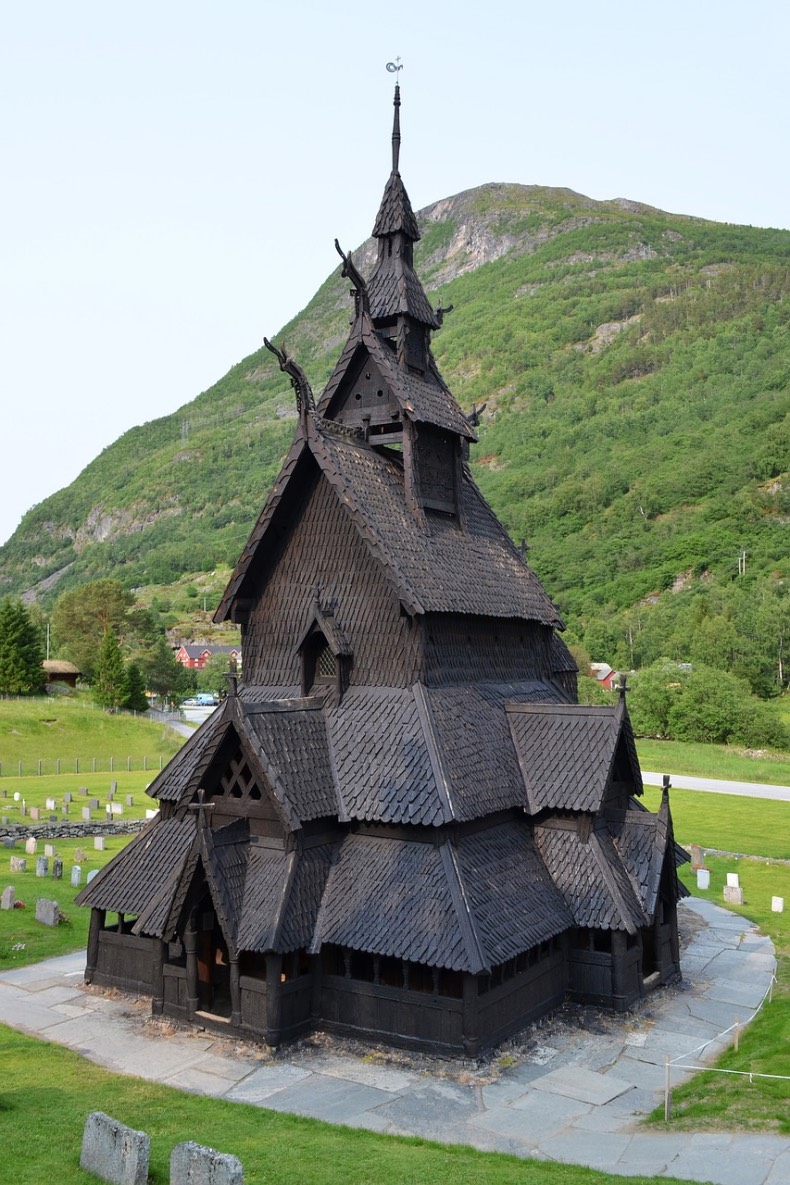
Borgund stave church interior
Following on from that point, one of the reasons this is known as one of Norway's most intriguing stave churches is because of the number of runic inscriptions.
A runic inscription was found at the north portal that shows pagan beliefs were very much alive. Carved by a man named Þórir, the inscription blames his troubles on the Norns, the female beings who are said to rule the fates of the races in Norse mythology. Another runic inscription reads simply: “Ave Maria”.
The history of Borgund
Most of Norway's surviving stave churches were built from the mid-12th to mid-14th centuries. Archaeological studies and written stories show us there were probably churches older than this too.
No-one really knows, but it's believed that around a thousand stave churches stood in Norway throughout the Middle Ages, with many more across northern Europe. Borgund is one of just 28 that still remain standing in Norway today.
Borgund itself was built in the Lærdal valley along one of the main trade routes between western and eastern Norway. It is believed to have built sometime around the years 1180-1200, although the exact date isn't known.
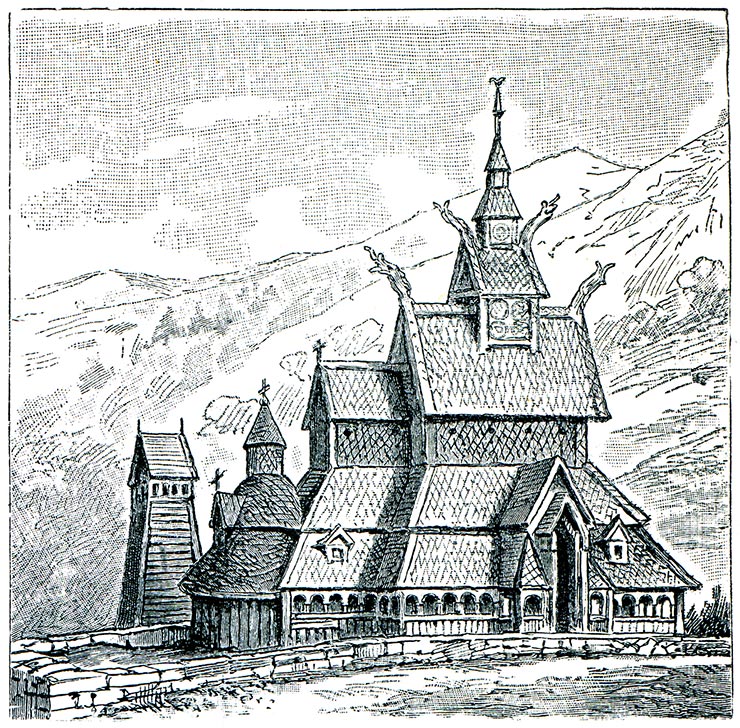
Some sources claim it could be as old as 1150, while other research shows there was a wooden church here before the current one was built. This means it could be possible that the current church stands on the site of an older pagan holy place.
Of course, there have been many additions and restorations over the years. Originally the roof was covered with horizontal boards and there were no windows. Sources from around 1320 show the church could hold 300 people. Windows were installed after the Reformation in the 16th-century, so that people could read psalms inside the church.
During the 19th-century Norway as a nation became more affluent and newer churches were gradually built to replace the old ones. This includes Borgund, as a newer parish church stands close to the original.
Read more: Bergen's magnificent stave church
Nine years after the new church was built, Fortidsminneforeningen (the Society for the Preservation of Ancient Norwegian Monuments) bought the stave church, which is the reason why it still stands today.
The new church
Calling its neighbour the ‘new' church is a bit inaccurate given its age. The parish church built adjacent to the stave church was actually built 150 years ago and is an attraction in itself.
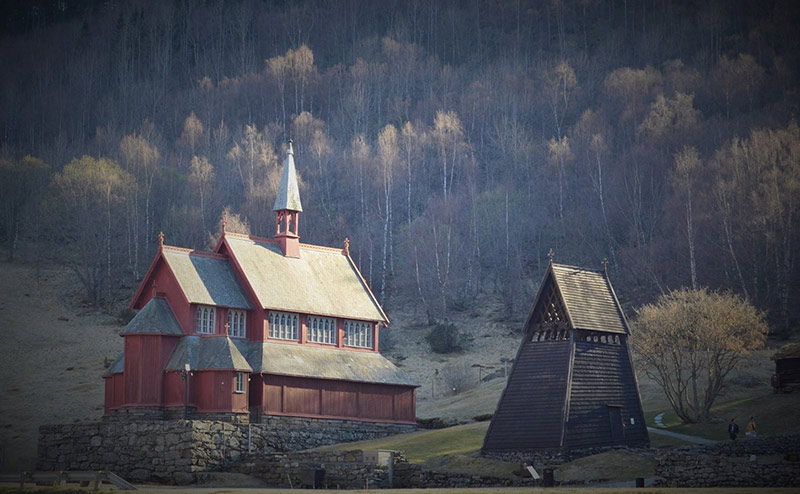
The red, wooden building has about 175 seats and functions today as part of the Borgund parish in the Indre Sogn deanery in the Diocese of Bjørgvin.
The interior is inspired by the visible construction elements of its neighbour, and is well preserved albeit with a change of colour in the 1960s and 1990s. There is a small collection of books including an altar book from 1826 and a bible dating back to 1802.
Take the King's Road
If you're planning to spend most of the day at Borgund, you can take advantage of the church's location at Vindhellavegen, a part of the ancient Kongevegen (King's Road) over the mountains.
The route has long been used as a bridleway and packhorse track followed by a postal route. The original route was dangerous with narrow paths across steep mountain ledges. Things improved when the ‘modern' Kongevegen opened in the 1790s, and was further improved in the 1840s by reducing the gradient to make it suitable for horses and carts.
Today, the Vindhellavegen stretch of Kongevegen is a popular hiking route.
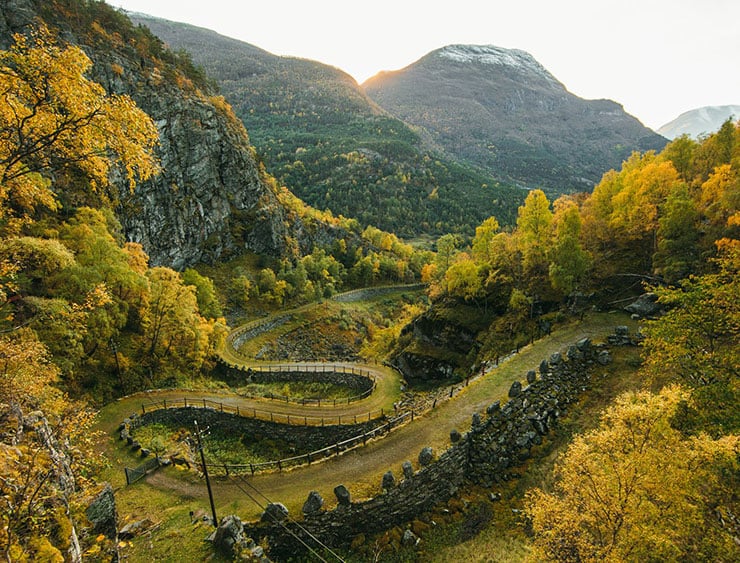
It starts above the stave church, and leads west. Walk behind the ‘new' church and follow the signs to pick up the historic trail. The most popular hike is a relatively easy 2.5hr loop.
Other things to see and do near the church
Depending on where you are travelling from, it could be a long way to travel just for the church. Thankfully there's plenty more to do in the area!
Lærdal: The historical centre of the village is a lovely place to stop for a walk. Plenty of historic buildings still remain despite the large fire of 2014 that ripped through the wooden centre. The King's Road (see above!) passes through the village.
Snøvegen: On its opening in the late Spring / early summer, dramatic cliffs of snow line both sides of the 45km-long National Scenic Route between the villages of Aurland and Lærdal. Don't miss the Stegastein viewpoint hovering above the pine tree forest that provides a wonderful view of the fjord.
Lærdal Tunnel: As an alternative to the snow road, the 24.5km-long Lærdal tunnel provides a handy shortcut between Lærdal and Flåm. It also happens to be the world's longest road tunnel. Three large caverns with different lighting provide respite for tired drivers.
Flåm: A popular cruise stop and starting point for the world-famous Flåm railway. You can also take a boat trip to the UNESCO World Heritage Nærøyfjord or even rent a kayak to get there under your own power.
Are you planning a trip to Borgund Stave Church in Norway? If so, why not share your plans on Pinterest? We've got just the pin for that. Just hit those social sharing buttons.


